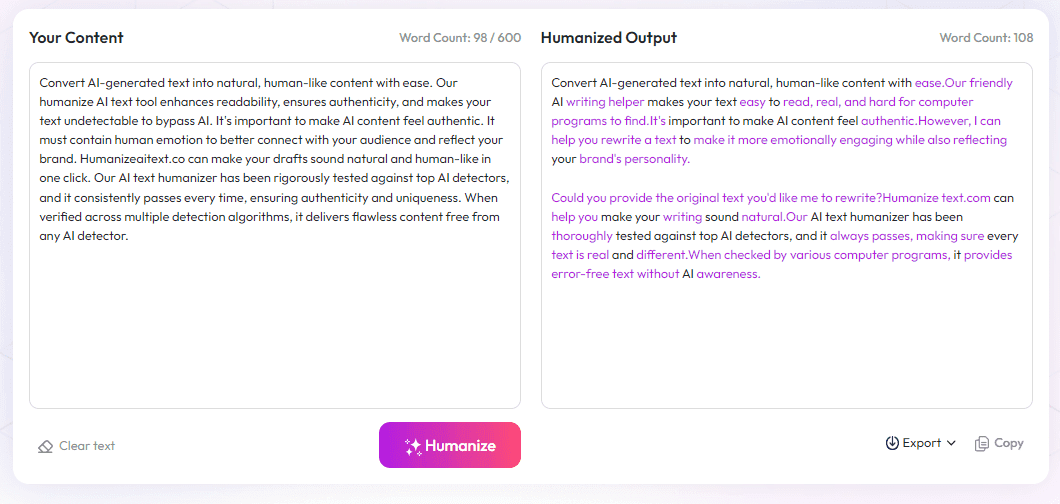Table of Contents
Got it! If you're looking to create children's interactive ebooks, you're probably wondering where to start. Fortunately, there's a bunch of ready-made templates out there that make designing fun and easy. Keep reading, and I’ll show you how to pick the perfect template and add cool features that keep kids hooked, all without needing to be a tech expert. Before long, you’ll be creating engaging ebooks that kids will love to explore.
Key Takeaways
Key Takeaways
- Use ready-made templates designed for kids to save time and make your ebook engaging. Look for features like animations, sound effects, and clickable hotspots that support storytelling and interaction.
- Choose bright colors, simple navigation, and large fonts to help children focus and explore easily. Adding fun elements like animated characters and pop-up sounds keeps kids interested.
- Trends like AR, voice recognition, and personalized stories are shaping the future of children’s ebooks. Creating content with these features can make your project stand out.
- The market is growing fast, with more demand from parents, teachers, and publishers. Publishing through popular platforms or partnering with schools can boost your success.
- Incorporate educational aspects like quizzes, puzzles, and learning goals to make your ebooks both fun and useful for teaching kids new concepts.
- Balance multimedia elements to keep kids engaged without overwhelming them. Short videos, sound effects, and puzzles should enhance the story, not distract from it.
- Design your ebook to be colorful, simple, and easy to navigate. Accessibility features like audio options and clear icons help kids stay immersed.
- Promote your ebook through online stores, websites, and social media. Offering free samples or bundles can attract more young readers and parents.
- Ensure all content is legally safe by using licensed images, sounds, and videos. Be aware of privacy laws related to children and digital data collection.

The market for children’s interactive ebooks is booming, with the industry expected to hit around $2.5 billion in 2025 and continue growing at an impressive 8% CAGR until 2033. This surge is driven by parents, educators, and publishers seeking engaging ways to stimulate young minds through technology that makes reading fun and interactive, like augmented reality and voice-activated books.
If you're looking to create a children’s interactive ebook, starting with the right templates can save you time and boost your creativity. Ready-made interactive children’s ebook templates are pre-designed layouts that let you quickly add multimedia and interactive features without needing advanced coding skills. Many platforms offer curated templates tailored specifically for kids' stories, educational content, or Activity Books, ensuring they are colorful, fun, and engaging.
Top Templates to Use Now
Some of the most popular templates for children’s ebooks include drag-and-drop designs that support animations, sound effects, and clickable elements. These templates usually come with customizable scenes, characters, and backgrounds, allowing you to personalize your story easily. To give you an idea, platforms like Canva and Visme offer templates with interactive hotspots, audio integration, and page-turning effects that mimic real books—adding that tactile feel that kids love.
Using templates designed specifically for kids also means they often incorporate larger fonts, simple navigation, and bright colors, which are important for keeping young readers focused. Examples include templates with animated characters that bounce when clicked, pop-up sound effects, and short video clips to make the story more immersive.
Additionally, many software options support features like embed videos and puzzles, which encourage interaction and learning. Combining these elements into your book can significantly improve engagement and make your project stand out in a competitive market.
Given the rapid growth of the interactive children’s book market—expected to reach USD 962.87 million by 2030—having the right templates at your fingertips makes all the difference. Whether you’re a writer, teacher, or self-publisher, choosing the best templates helps you craft captivating stories that kids will want to read over and over.
Helpful Tips
- Start with platforms like Canva, Visme, or Adobe Spark, which offer intuitive drag-and-drop templates.
- Look for templates that support multimedia integration—animations, audio, and videos—to keep children entertained.
- Prioritize templates with colorful, simple layouts designed for young learners’ attention spans.
- Check user reviews and demos before choosing a template—visuals speak louder than words!

9. Trends Shaping the Future of Children’s Interactive eBooks
The children's interactive eBook market is leaning heavily into new tech, with augmented reality (AR), voice recognition, and machine learning becoming more common.
Expect to see more personalized reading experiences driven by AI, where stories adapt to a child's reading level and interests.
Interactive features like 3D animations and virtual reality (VR) will likely become standard, making stories more immersive than ever.
Eco-friendly digital publishing will grow, with publishers focusing on sustainable design and minimal digital waste.
Platforms will continue to simplify creation, allowing even non-tech-savvy educators and parents to produce engaging content.
Keeping an eye on these trends can help you create ebooks that stay relevant and appealing in an evolving market.
10. Market Insights and Growth Opportunities for Creators
The interactive children’s book market is currently valued around $2.5 billion in 2025, and it’s expected to grow at about 8% per year until 2033.
With rising demand from parents and educators for educational and entertaining content, there’s a lot of space for new creators to find a niche.
Self-publishing tools and templates have lowered the barriers, making it easier to produce and sell your own interactive eBooks.
Most publishers see children’s ebooks as a reliable source of income, especially when leveraging trending topics or seasonal themes.
Partnerships with schools and libraries can open up additional distribution channels for your digital books.
Researching what’s popular—like AR-enhanced stories or puzzle-based books—can give you a leg up in this growing space.
11. The Role of Educational Content in the Interactive eBook Market
Educational content is a big driver behind the growth of kids’ interactive ebooks, making up a large share of the market.
Parents and teachers look for books that combine fun with learning, and interactive features help reinforce key concepts.
Games, quizzes, and puzzles embedded within books can improve retention and make learning more engaging.
Using structured learning goals aligned with curriculum standards can make your ebook more attractive to schools and educators.
You might consider developing series or theme-based books—like STEM topics or multicultural stories—to meet different educational needs.
Incorporating assessment tools or progress tracking can also turn your ebook into a useful teaching resource.
12. How to Keep Kids Engaged with Interactive Features
The key is to balance multimedia elements with storytelling—too many effects can be distracting, but the right mix will keep kids interested.
Think about including interactive hotspots that reveal fun facts or hidden objects to encourage exploration.
Use sound effects sparingly—an occasional voice or ambient noise can add atmosphere, but overload can wear kids out.
Short videos or animations should complement the story—not replace it—adding depth rather than complexity.
Interactive puzzles or mini-games should be simple and tied directly to the story, teaching as they entertain.
Test different features with your target age group and adjust based on feedback, to find the perfect mix.
13. Best Practices for Designing Kid-Friendly eBooks
The design should be colorful, simple, and intuitive, making navigation straightforward for young readers.
Use large fonts and clear icons to guide children through the story without frustration.
Limit text on each page—kids learn best from bite-sized chunks, especially when combined with visual cues.
Incorporate familiar characters or themes to build a connection and foster interest.
Ensure accessibility by including audio options, adjustable font sizes, and high-contrast colors.
Remember, the goal is to make the book inviting and easy to use, so kids stay immersed and want to explore more.
14. How to Market and Distribute Your Interactive Children’s eBook
Once your ebook is ready, distribution strategies include publishing on platforms like Amazon Kindle Direct Publishing or Apple Books.
Creating a website or landing page can help you connect directly with parents and teachers interested in your work.
Social media promotion, especially through kid-friendly channels, can boost visibility and sales.
Partnering with educational blogs, parenting sites, or online communities can also bring more attention to your books.
Offering free samples or demo versions can entice new readers and create buzz around your release.
Think about bundling your ebook with related products, like printable worksheets or activity packs, to increase value.
15. Legal and Copyright Considerations for Children's Interactive eBooks
Ensure you have the rights for all images, sounds, and videos you include, especially if sourcing from external providers.
Clear copyright notices and licensing agreements are essential to protect your work and avoid legal issues.
Be aware of child privacy laws—if your ebook collects personal data or involves interactive features, compliance with regulations like COPPA is necessary.
Consider registering your work or applying for copyright to safeguard your creation.
Using royalty-free assets and proper attribution can save you headaches and keep your project legally sound.
Staying informed about evolving digital rights laws ensures your ebook remains compliant and protected.
FAQs
Using ready-made templates saves time, makes customization easier, and offers professionally designed layouts. They help create engaging, interactive eBooks quickly, even for those new to eBook design, ensuring the final product appeals to young readers.
Add interactive elements like animations, audio, videos, and puzzles. Incorporating vibrant illustrations and engaging sounds also helps capture and hold children’s attention throughout the story.
Platforms like Canva and Visme offer drag-and-drop features to add multimedia easily. Specialized software like Kotobee supports interactive features, making it simple to develop engaging children’s eBooks without extensive coding.
Export your eBook in formats like PDF or HTML5 and test it on different devices to ensure functionalities work smoothly. Share via email, online platforms, or upload to eBook stores for wider accessibility and feedback.



